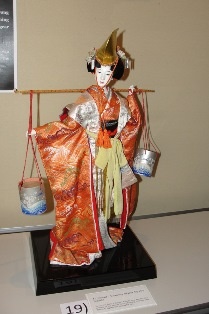The Dolls of Japan


The official opening of the Dolls of Japan exhibition was held at the Nairobi National museum on the 6th of February 2015. The opening was graced by His Excellency Ambassador Tatsushi Terada, Japanese Ambassador to the Republic of Kenya; Ms. Saima Ondimu, Executive Director, Kenya @50 (Ms. Ondimu was representing the Cabinet Secretary for Sports, Culture & the Arts) and Member of Parliament for Budalangi Constituency Hon. Ababu Namwamba among other dignitaries and guests.
The total of 70 samples exhibited is simply awe-inspiring to anyone who visits the museums Temporary exhibition hall. “The Dolls of Japan” introduces Japan’s representative dolls. In Japan, dolls have been part of everyday life since ancient times. Japanese dolls reflect the customs of Japan and the aspirations of its people possess distinctive regional attributes and over the centuries have developed in many diverse forms. Dolls also provide a showcase for traditional Japanese craft products, such as textiles.
Some of the representative dolls introduced include Hina ningyo (Girls’ Festival dolls) and Gogatsu ningyo (Boys’ Day dolls), which have their origins in ancient customs; dolls connected to traditional performing arts like noh, bunraku and kabuki; regional dolls from throughout the country; and “creative dolls” produced by contemporary craftspeople.
“The Dolls of Japan” is scheduled from 5th February 2015 to 25th February 2015 at the Temporary Exhibition Hall at the Nairobi National Museum.






